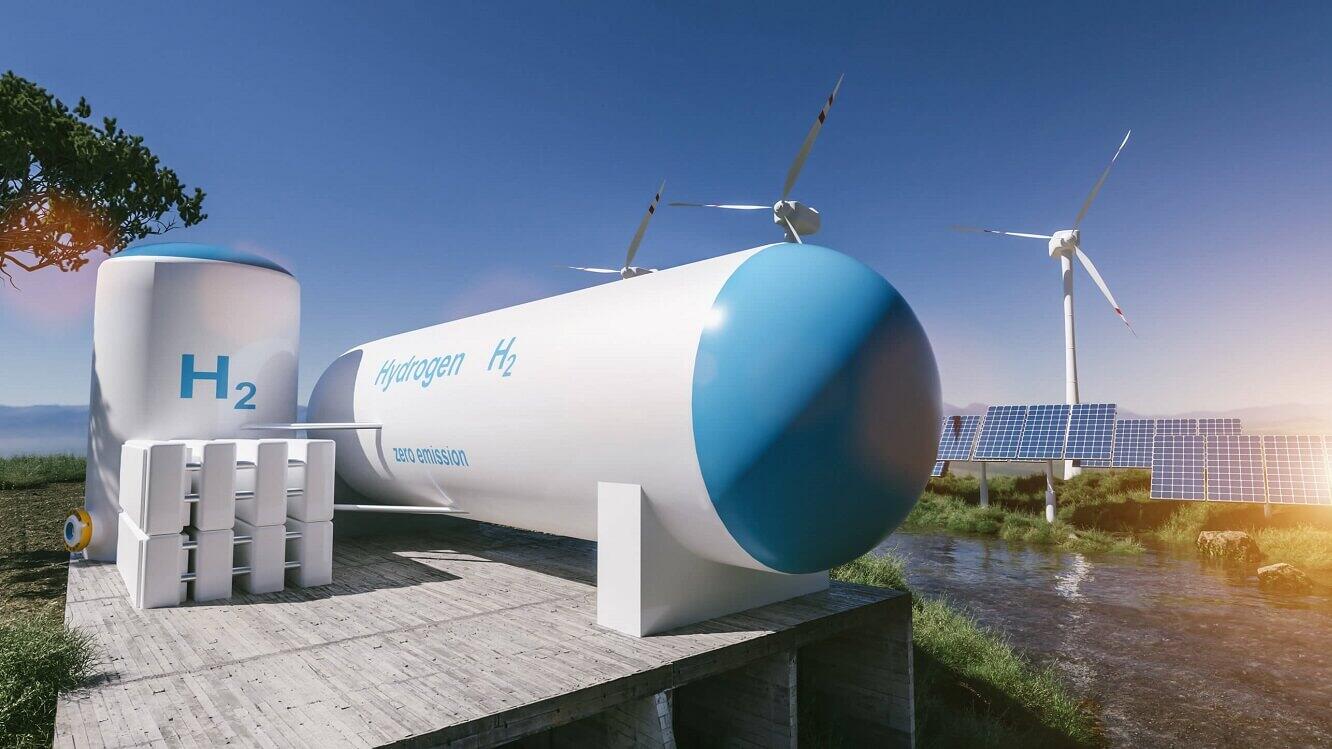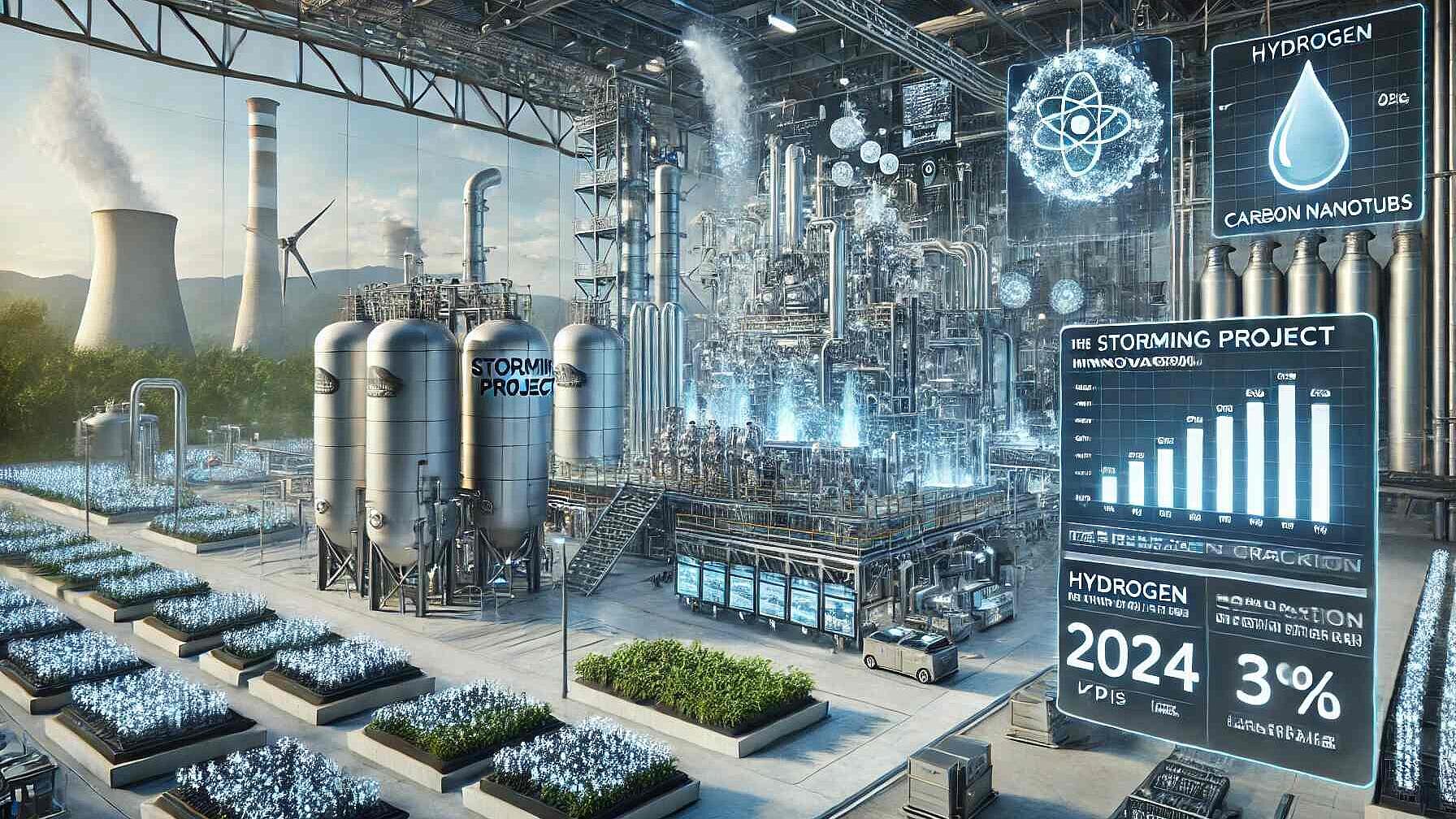 Energy Infrastructure
Energy InfrastructureRevolutionizing Energy: Discover 5 plus 1 Different Methods for Producing Clean and Abundant Hydrogen
Summary
Hydrogen is a versatile and clean energy source that can be used for a variety of purposes. One of the main challenges in the widespread adoption of hydrogen as an energy source is the efficient and cost-effective production of hydrogen. In this article, we will briefly showcase 5 different options for producing hydrogen and their advantages and disadvantages, namely through steam methane reforming (SMR), electrolysis, biomass, photoelectrochemical process (PEC), biohydrogenation.
And we will reflect on categorization based on environmental impact as well as a new innovative approch, the STORMING project
Open full article
Revolutionizing Energy: Discover 5 plus 1 Different Methods for Producing Clean and Abundant Hydrogen
Hydrogen is a versatile and clean energy source that can be used for a variety of purposes, such as transportation, power generation, and industrial processes. One of the main challenges in the widespread adoption of hydrogen as an energy source is the efficient and cost-effective production of hydrogen. In this article, we will briefly showcase 5 different options for producing hydrogen and their advantages and disadvantages.
There are even more options and a way of categorizing them is by their environmental impact, check this article from John Armstrong: "Cracking the Hydrogen Colour Code". John is also author of "The Future of Energy".
The most common method for producing hydrogen is through the steam methane reforming (SMR) process.
This process involves reacting methane (natural gas) with steam to produce hydrogen and carbon dioxide. The advantage of this method is that it is well-established and can be easily integrated into existing natural gas infrastructure. However, the main disadvantage is that it produces greenhouse gases, such as carbon dioxide, as a byproduct.
Another method for producing hydrogen is through the electrolysis of water.
This process involves using an electric current to split water molecules into hydrogen and oxygen. The advantage of this method is that it is a clean and renewable process that does not produce any greenhouse gas emissions. However, the main disadvantage is that it is currently more expensive than the SMR process and requires a significant amount of energy to operate.
A third option for producing hydrogen is through the use of biomass.
Biomass can be converted into hydrogen through a process known as gasification, in which the biomass is heated in the absence of oxygen to produce a mixture of hydrogen and carbon monoxide, known as synthesis gas or syngas. The advantage of this method is that it uses a renewable resource and can also produce hydrogen with lower greenhouse gas emissions than the SMR process. The main disadvantage is that the process is not yet fully developed and still relatively expensive.
A fourth method for producing hydrogen is the photoelectrochemical (PEC) process.
This process uses the energy from sunlight to split water into hydrogen and oxygen. The advantage of this method is that it is a clean and renewable process that does not produce any greenhouse gas emissions. The main disadvantage is that the technology is still in the early stages of development and not yet cost-competitive with other methods.
Another promising method for producing hydrogen is through the use of algae.
Algae can be used to produce hydrogen through a process known as biohydrogenation. The advantage of this method is that it uses a renewable resource and can also produce hydrogen with lower greenhouse gas emissions than the SMR process. The main disadvantage is that the process is not yet fully developed and still relatively expensive.
Innovation: Methane cracking producing hydrogen and carbon nanomaterials for battery applications ("STORMING")
EEIP partners in a recently started project called STORMING and funded by the European Commission as a Research and Innovation project under the Horizon Europe program. This project aims to develop breakthrough and innovative structured reactors heated using renewable electricity, to convert fossil and renewable CH4 into CO2-free H2 and highly valuable carbon nanomaterials for battery applications.
- in case you are interested to learn more about this project, please contact Ana Sofia Praxedes, the project communication manager
Conclusion
In conclusion, there are several options for producing hydrogen, each with their own advantages and disadvantages. The steam methane reforming process is the most common and well-established method, but it produces greenhouse gas emissions as a byproduct. The electrolysis of water is a clean and renewable process, but it is currently more expensive and requires a significant amount of energy. The use of biomass and algae, as well as the photoelectrochemical process, are promising methods for producing hydrogen with lower greenhouse gas emissions, but they are not yet fully developed and relatively expensive. As technology advances and costs decrease, it is likely that hydrogen will play an increasingly important role in the global energy mix.



